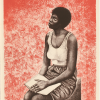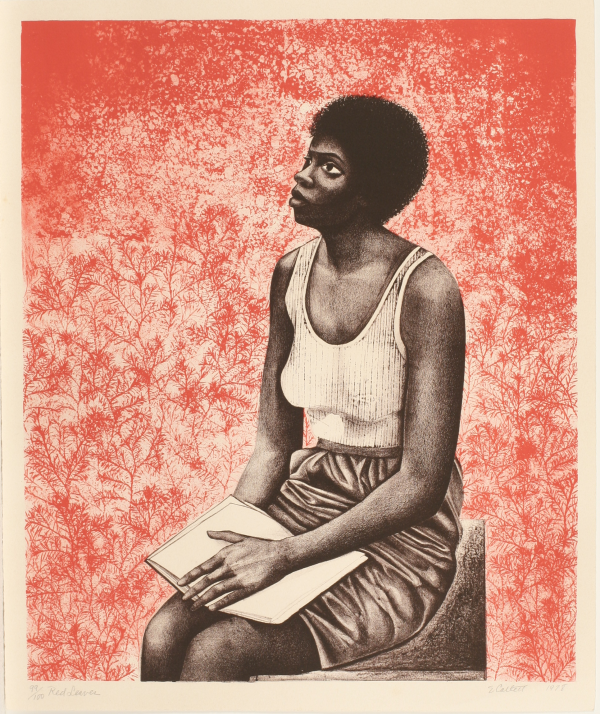Artmaking as Protest
| Grade | 9th -12th Grades | Class | Length of Lesson | Approximately 6 - 7 (40 - minute sessions) |
| Lesson Title | Artmaking as Protest |
| Unit Title | Artmaking as Message: Elizabeth Catlett |
| Unit Compelling Question | What is a message? |
| Historical Context: WHO: Elizabeth Catlett WHEN: 1912 - 2012 WHAT: American Printmaker, Sculptor, and Educator FAMOUS FOR: Artistic explorations of race, class, and expression of her own African American female identity. IN HER OWN WORDS: ARTIST'S HISTORY: IOWA CONNECTIONS: ARTIST'S WORK: ARTIST'S WORLD: |
|
| Lesson Supporting Question | |
| Lesson Overview | Students will learn about the life and influence of artist Elizabeth Catlett, who was the first black woman to receive an MFA and her legacy in Iowa. Using Catlett’s artwork, Red Leaves, 1978, as inspiration, students will research how color(s) are often associated with a political or social movement, and often used in protest. Then students will choose a political or social movement that is important to them and create an artwork using the movement’s associated color. Students will choose a variety of visual materials (2D or 3D as desired) based on their chosen movement to create an artwork. Then, students will write an artist statement that describes the work and steps they took to create the artwork and why they chose that particular political or social movement. |
| Primary Sources Used |
|
| Resources Needed | Other Notable Artworks: Learning, 1948 Mother and Child, 1956 Sharecropper, 1968 Singing Their Songs, 1992 Online Resources (Used at Instructor's Discretion): VIDEO: Elizabeth Catlett Visionary Project Video Series VIDEO: 2017 Art on Campus - "Totem" by Elizabeth Catlett VIDEO: Tyler C: Elizabeth Catlett, 'Sharecropper', 1952 | Articulation Prize 2022 PODCAST: An Alternative History of Art: Elizabeth Catlett VIDEO: The Political Meaning of Colors Around the World ARTICLE: The Colors of Protest ARTICLE: The color of assumption: How colors became entangled in politics Materials: Access to internet Print/Copy/On Screen image of artwork Red Leaves, 1978 Sketch paper and pencils Various materials of choice |
| Standard | |
| Lesson Target | Students will analyze and discuss the artwork and life of artist Elizabeth Catlett and her connections to The University of Iowa in Iowa City.;Students will research and choose a political or social movement that is important to them and create an artwork using the movement’s associated color. ;Students will present in a written or verbal form explaining the steps and materials used to create the artwork and why they chose that particular political or social movement. ;Student will participate in peer critique on the efficacy of the artwork’s representation of the students’ chosen political or social movement. |
| Lesson Themes | African American Experience, Women's Experience, Visual Arts, Higher Education |
|
| Formative Assessment (How will you use the formative assessments to monitor and inform instruction?) |
Initial visual brainstorms and student/teacher consultations. |
| Summative Assessment (How does the lesson connect to planned summative assessment(s)?) |
Completed artworks, written artist statements, and peer critique. |
| Author | Megan Dehner | Created | Last Edited | ||||
| Reviewer: Teaching Iowa History Team | |||||||
| Lesson Plan Development Notes: Summer Fellowship 2022 | |||||||


